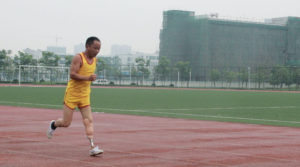(May 27, 2014, Wuhan) There are an estimated 85 million people with disabilities in Mainland China. Along with their family members of over 200 million, they comprise 20% of China’s population. Two-thirds of these families live in rural areas that lack proper support resources. The Li Ka Shing Foundation and the China Disabled Persons’ Federation (CDPF) believe that with proper rehabilitation and training, disabled persons can live a full and meaningful life and become contributing members of society.
Since 1984, the Foundation has forged a partnership with CDPF to offer services for the disabled, with donations of over HK$400 million, including a new contribution of HK$100 million to launch Phase 3 of the Cheung Kong New Milestone Program. Supported by Mr. Li, the Program has been operating since 2000 to assist disadvantaged groups who are unable to help themselves. Over the years, approximately 16 million people have benefited indirectly from the Program. Launched in Wuhan, Phase 3 will run from 2014 – 2018, with a focus on innovative community aid models. Hubei and Heilongjiang have been selected to host the pilot neighborhood care programs which will spearhead community participation in disabled services. Invitations for neighborhood care proposals have been sent out to disabled services groups.
New for Phase 3
One stop service – Enhanced support will enable disabled persons to find services they need in one rehabilitation centre, from group support to employment services to referrals.
Leveraging Information Technologies – With wider adoption of mobile phones among grassroots residents, CDPF will be able to leverage information technologies to achieve greater efficiency, e.g., online learning for therapists and parents of children with cerebral palsy; mobile apps to facilitate better feedback from the disabled; and news and information disseminated through mobile phones will also enhance educational opportunities for the disabled.
Innovative community aid models – In Phase 3, 100,000 disabled persons are expected to benefit directly through prosthetics installations, education and rehabilitation for children with cerebral palsy, and door-to-door services offered by hundreds of social organizations. This innovative model can be replicated in 33 provinces nationwide, to benefit millions more.


